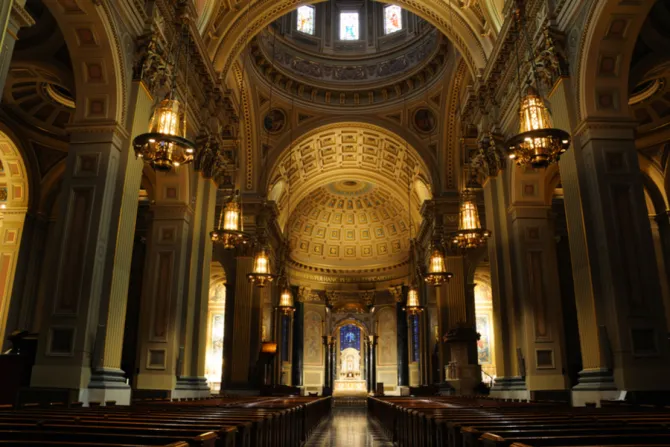Philadelphia, Pa., Dec 6, 2018 / 17:13 pm
A new statistical analysis seeks to contextualize data about child sexual abuse by Catholic clergy in Pennsylvania, four months after a grand jury report detailed hundreds of abuse allegations in six of the state's diocese, spanning nearly eight decades.
To "properly understand the import" of the grand jury's findings, the statistical analysis compares the number of abuse allegations to other institutions during similar time periods, and seeks to better understand when most of the cases of alleged abuse took place.
The Archdiocese of Philadelphia commissioned the analysis, which was conducted by the law firm Lewis Roca Rothgerber Christie LLP.
The 884-page grand jury report, released Aug. 14, was written by 23 grand jurors who spent 18 months investigating the six dioceses with the help of the FBI, examining half a million pages of documents in the process. The six diocese are Allentown, Erie, Greensburg, Harrisburg, Pittsburgh, and Scranton.
The report claimed to have identified more than 1,000 victims of 301 credibly accused priests and presents a devastating portrait of efforts by Church authorities to ignore, obscure, or cover up allegations - either to protect accused priests or to spare the Church scandal.
Despite the high number of abuse cases mentioned in the grand jury report, the statistical analysis focused on "factual information related to 680 separate allegations of abuse over an 84 year period," spanning from 1934 to the present.
The details of the remaining cases, such as dates of the alleged abuse, the analysis said, were so "deficient" that they could not be included.
Of the 680 cases studied whose cases were tied to specific years, 23 cases, or roughly 3 percent, involved allegations of abuse that took place after the 2002 adoption of the Charter for the Protection Children and Young People. The Diocese of Greensburg did not report any alleged incidents that took place after 2002.
The most recent alleged abuse incident described in the grand jury report, to the extent that dates for the allegations were provided, is from 2013. The average year that each alleged incident of abuse in the grand jury report ended was 1979, the analysis says.
The analysis notes that while the grand jury report did not identify any priests with substantiated claims of sexual abuse of minors who are still in active ministry, there are three active priests from the Diocese of Pittsburgh who have been accused of sexual abuse, but the allegations were not substantiated.
By means of comparison, the authors write that in 2016, the year the grand jury began its investigation, the Pennsylvania Department of Human Services identified over 3,000 total substantiated allegations of sexual abuse during the calendar year- more than three times the number of total allegations against the Catholic Church, both substantiated and unsubstantiated, identified by the grand jury over an eighty year time span.
"What is true in Pennsylvania is also true on a national level," the analysis reads, noting that nationally, 24.7 percent of women and 16 percent of men have experienced sexual abuse during their childhood.
"Evidence shows that sexual abuse of minors is a huge epidemic that touches every major institution in society. Further, by all accounts, few institutions have done as much as the Catholic Church to learn from past failures and take steps to prevent abuse going forward."
Citing a 2007 New York Times report, the analysis says that insurance companies receive around 260 reports per year of sexual abuse of a minor in U.S. Protestant churches.
"This annual number is more than the total accusations against Catholic clergy since 2005," the authors assert.
And according to a 2004 Education Week study, 290,000 students experienced some sort of physical sexual abuse by a public school employee from 1991 to 2000.
(Story continues below)
The analysis also compared this figure to the estimated 10,677 allegations of abuse against priests and deacons from 1950 to 2002, which was detailed in a 2004 report from the John Jay College of Criminal Justice.


